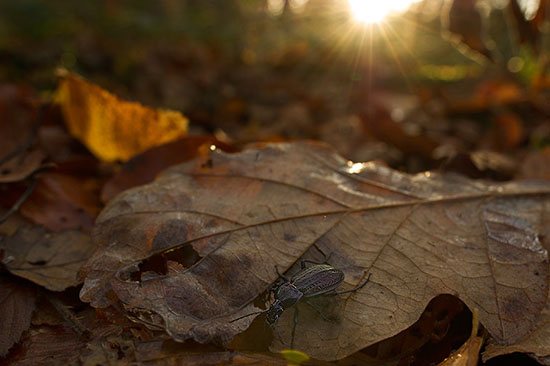In November 2015, I spent four days in the Gaume, the most Southern part of Belgium. The region still holds some vast tracts of old growth forest between Virton, Orval and Étalle.
The forest is still home to a small population of Hazel Grouse, one of the more threatened bird species in Belgium. Good forest indicator species such as Middle Spotted Woodpecker are common in the area. The forest is inhabited by no less than 7 Carabus species: Carabus auronitens, Carabus coriaceus, Carabus granulatus, Carabus intricatus, Carabus problematicus, Carabus violaceus and Carabus arvensis all occur in the area. The area is known to hold a lot of colour variations of Carabus arvensis. In the more open vegetation two extra species can be found in the area: Carabus monilis and Carabus auratus.
Under here an image from the forest around Buzenol.
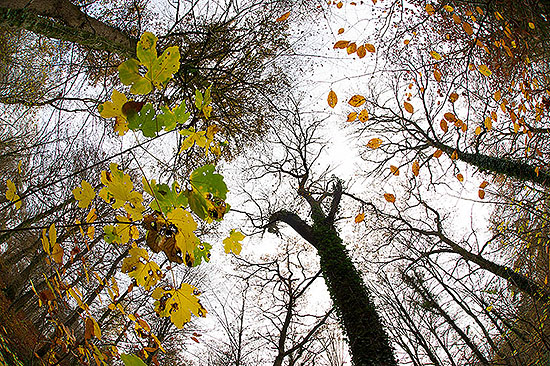
Despite the fact that many of these Carabus species can be locally abundant, it is still not easy to find many of the mentioned species. We still don't know enough about the ecology of the larval stages of the Carabus species and neither do we about the effect of more dominant species on other species. Moreover the microhabitat in which a species lives can vary a lot, depending on the region where it is found. Concurrence with other Carabus species, prey densities and predation aspects might cause the same species to shift to another type of microhabitat inside the forest or even to a completely different habitat.
Despite the fact that Carabus arvensis can be found in Western Europe in a wide variety of habitats (wet heath, humid forests on acid as well as alkaline soils, bogs, dryer forest types, etc…), the species is often only found in very localised patches of the forest.
Buzenol Forest
On my first quests around Buzenol I always came across the following four most abundant species in the area: Carabus auronitens, violaceus, problematicus and nemoralis. Under here some images from the forest where I found them, followed by an image from a running Carabus auronitens and a Carabus violaceus.
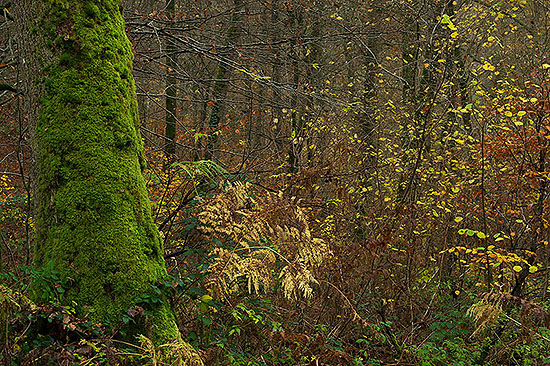


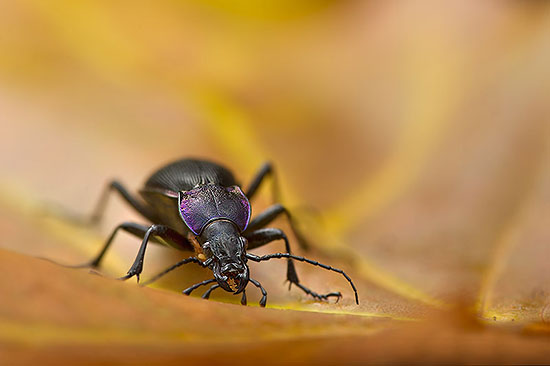
How to create a different image by changing the foreground
The two images under here, from a Carabus nemoralis, illustrate how you can make a different type of image, by slightly moving your position or by moving the leaves between your lens and the beetle a little bit. The images were made at eyelevel. For the second image I lifted a leave close to my lens slightly up, to create a blurry area.

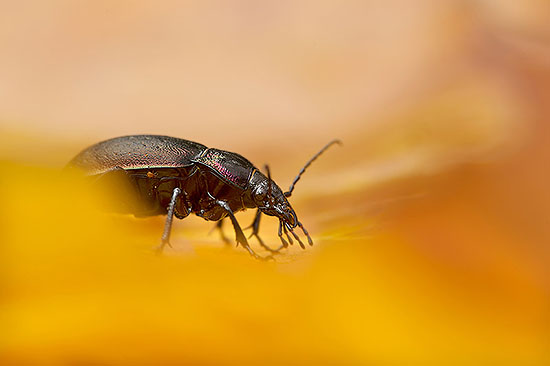
Finally, Carabus arvensis
In an area a little more to the North I finally found three specimens of Carabus arvensis, but the species was still not dominant up there. After several hours of intensive searching I found a wet area with a combination of plenty of dead wood, fallen trees, dense undergrowth and very small open patches inside the forest. Within a distance of only fifty meters, the Carabus population changed completely! I a dryer area with older trees Carabus problematicus and auronitens were dominant. In the wet and younger forest, Carabus arvensis was really abundant and happened to be the most common species. In the same area Carabus violaceus, problematicus, auronitens and nemoralis were present, but in smaller numbers.
Under here two images from the habitat where I found Carabus arvensis to be common.
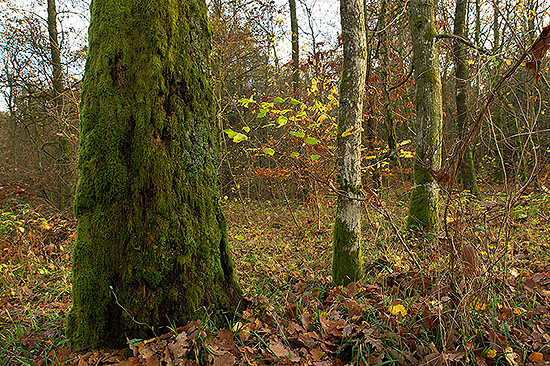
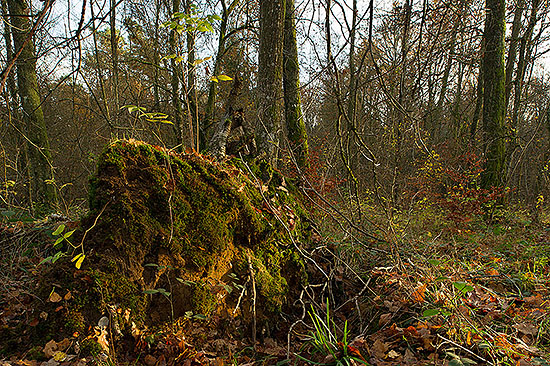
Under here a coppery individual, which is in Western Europe in most areas the most usual colour morph. The next images show another coppery specimen, but with a reddish fringe on its shields, followed by a blackish and purple individual. The purplish specimens were encountered the most frequently up there.
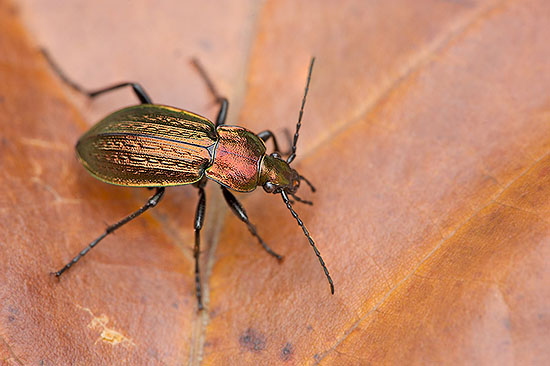
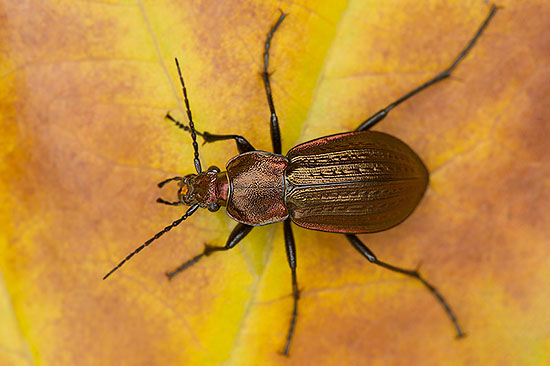
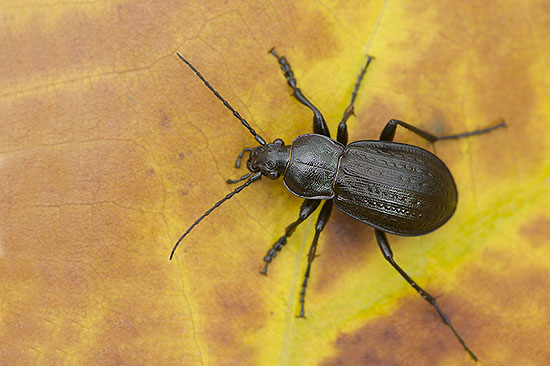

Next image shows a spectacularly coloured individual with an almost turquoise pronotum and purplish elytra.
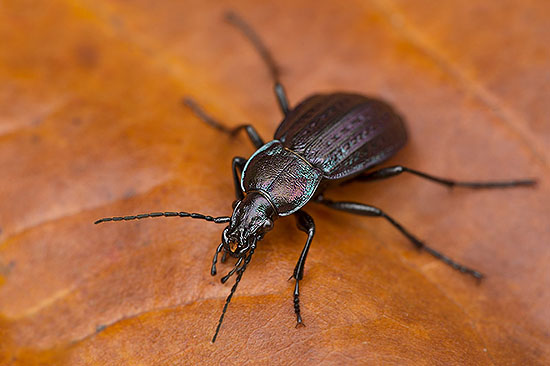
Finally, under here, two of my favourite images from Carabus arvensis. The first image shows a coppery female and a purple male. The second image was taken between the leaves at eye-level of the beetle.
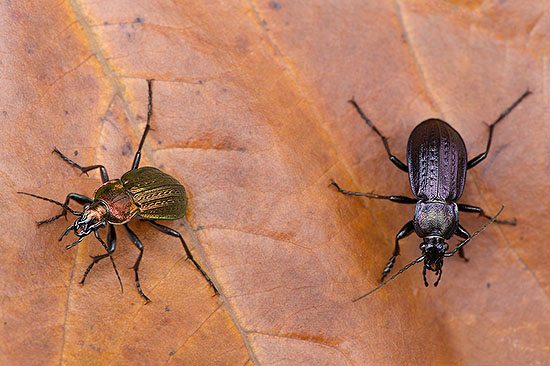
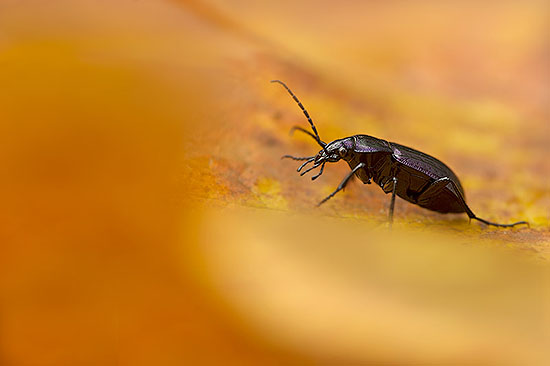
The next two images show a Carabus arvensis and a Carabus violaceus in their forest environment.
